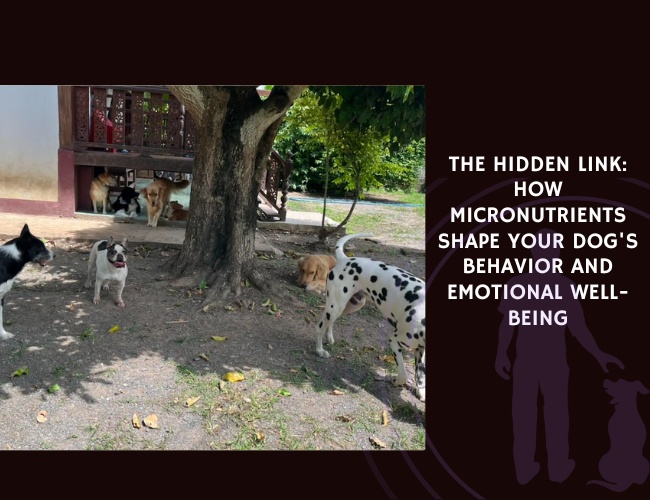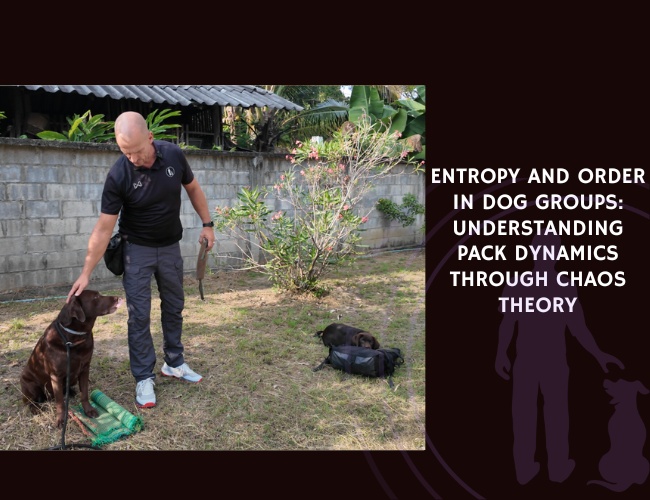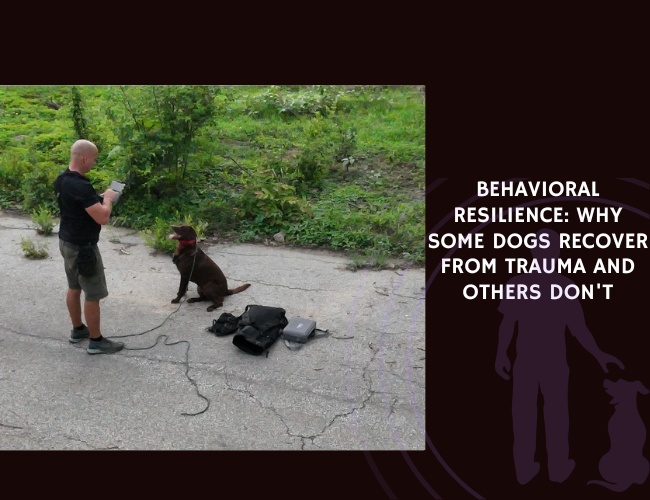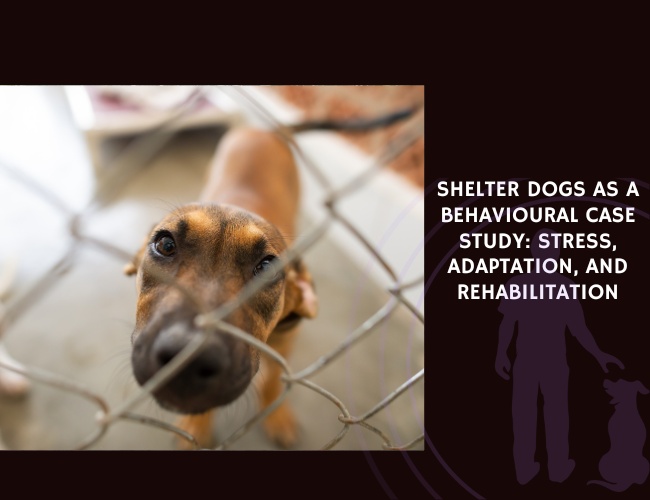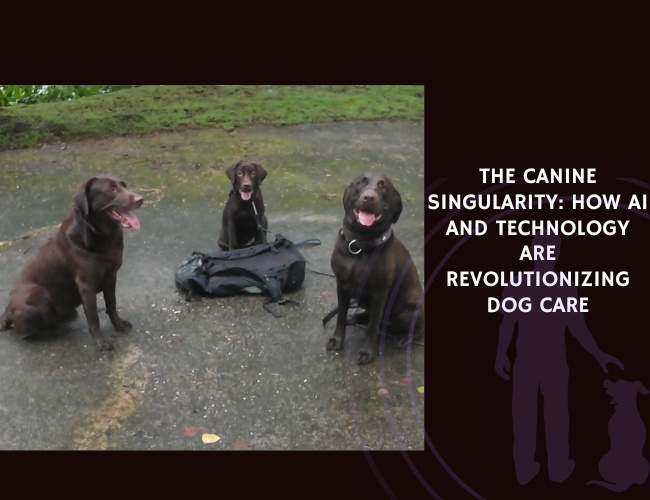Introduction: When Your Dog Pauses to Think
Have you ever watched your furry friend hesitate before making a decision, tilting their head as if contemplating their options? That moment of pause might be more profound than we previously imagined. For centuries, we’ve marveled at our dogs’ intelligence, loyalty, and emotional depth, but recent scientific exploration is pushing us to consider an even more fascinating question: Can dogs think about their own thinking?
This journey into canine metacognition—the awareness and understanding of one’s own thought processes—reveals a complex landscape where neuroscience meets behavior, and where our four-legged companions might be more self-aware than we ever dreamed. Let us guide you through the latest discoveries that are reshaping how we understand the canine mind, from uncertainty monitoring to self-reflection, and explore what this means for the profound bond we share with our dogs. 🧡
Understanding Metacognition: What Does It Mean to Think About Thinking?
Before we dive into the fascinating world of canine self-reflection, you might wonder what metacognition actually entails. In simple terms, metacognition is your ability to step back and observe your own mental processes—like when you realize you’re struggling to remember something, or when you know that you know the answer to a question before you can quite retrieve it.
The Building Blocks of Metacognitive Awareness
- Knowledge monitoring: Understanding what you know and what you don’t know
- Confidence assessment: Evaluating how certain you are about your knowledge or decisions
- Strategy selection: Choosing different approaches based on your assessment of the situation
- Error recognition: Identifying when you’ve made a mistake and adjusting accordingly
In humans, these abilities emerge gradually through childhood and are associated with specific brain regions, particularly the prefrontal cortex. But here’s where it gets interesting: similar brain structures exist in dogs, though they’re proportionally smaller and organized differently. This neurological foundation opens the door to exploring whether our canine companions might possess their own version of metacognitive abilities.
The implications are profound. If dogs can monitor their own uncertainty, evaluate their past actions, and adjust their strategies accordingly, it fundamentally changes how we approach training, behavior modification, and even our daily interactions with them. Next, we’ll explore how researchers are uncovering evidence of these remarkable abilities in our four-legged friends.
Uncertainty Monitoring and Confidence Judgment in Dogs
Picture this: your dog approaches a puzzle toy filled with treats, sniffs it thoroughly, then looks at you with those expressive eyes before trying again. This behavior might represent more than simple frustration—it could be a window into your dog’s ability to monitor their own uncertainty.
Task Opting Out: When Dogs Choose Not to Choose
Recent studies have revealed fascinating patterns in how dogs approach challenging tasks. When presented with problems of varying difficulty, dogs don’t simply barrel through with trial and error. Instead, they often demonstrate what researchers call “adaptive opt-out behavior”—essentially, they know when they don’t know.
In controlled experiments, dogs given the option to skip difficult tasks for easier ones consistently showed preference patterns that mirror those seen in primates and dolphins. They’re more likely to opt out when:
- The task complexity exceeds their previous experience
- Visual or olfactory cues are ambiguous
- Rewards are uncertain or delayed
Delayed Memory Tasks: Testing Canine Confidence
Your dog’s ability to remember where they buried that bone last week might involve more metacognition than you’d expect. In delayed memory tasks, researchers have observed that dogs adjust their search behavior based on how long ago they hid an object. The longer the delay, the more systematic and careful their search becomes—suggesting they’re aware of their memory’s limitations.
This awareness manifests in several ways:
- Increased sniffing and ground investigation after longer delays
- More frequent “checking” behaviors with their human companions
- Strategic revisiting of multiple locations rather than confident direct retrieval
Choice Paradigms: Reading the Canine Mind
Perhaps the most compelling evidence comes from choice paradigm studies. When dogs face two options with different difficulty levels or reward probabilities, their decision-making process reveals sophisticated cognitive evaluation. They don’t just randomly choose—they pause, assess, and often demonstrate physical signs of deliberation like head tilts, ear movements, and changes in body posture.
These studies have shown that dogs can:
- Differentiate between tasks they can and cannot solve
- Adjust their persistence based on perceived task difficulty
- Seek help more frequently when uncertain about solutions
The comparative analysis with other species reveals remarkable parallels. Like great apes and dolphins, dogs show longer decision latencies when faced with difficult discriminations, and they’re more likely to use information-seeking behaviors when uncertain. This suggests that metacognitive abilities might be more widespread in the animal kingdom than previously thought. 🐾
Response to Ambiguity: How Dogs Navigate Uncertain Situations
When faced with conflicting information or ambiguous cues, your dog’s behavior becomes a fascinating display of cognitive processing. Understanding how dogs respond to uncertainty not only reveals their metacognitive abilities but also helps us become better companions and trainers.
Decision Latency: The Thoughtful Pause
You’ve likely noticed it—that moment when your dog freezes, processing conflicting commands or unclear situations. This pause isn’t confusion in the traditional sense; it’s active cognitive evaluation. Research shows that decision latency in dogs correlates strongly with task difficulty and ambiguity levels.
Dogs demonstrate longer decision times when:
- Multiple cues conflict (e.g., verbal command says “stay” but body language suggests “come”)
- Environmental factors create uncertainty (new locations, unfamiliar objects)
- Past experiences don’t clearly map to the current situation
This thoughtful hesitation reflects an internal assessment process, where your dog weighs options and evaluates confidence levels before acting.
Body Language: The Silent Communication of Doubt
Your dog’s body speaks volumes about their internal cognitive state. Researchers have identified specific behavioral markers that indicate uncertainty monitoring:
- Displacement behaviors: Sudden scratching, yawning, or lip licking when faced with difficult decisions
- Gaze alternation: Looking between the problem and their human, seeking additional information
- Postural changes: Lowered body position, tucked tail, or cautious approach indicating low confidence
- Vocalization patterns: Specific whines or quiet barks that differ from confident communication
These aren’t just stress responses—they’re sophisticated indicators of metacognitive processing, showing your dog is aware of their own uncertainty.
Seeking Human Guidance: The Social Solution
Perhaps most remarkably, dogs have evolved a unique metacognitive strategy: recruiting human help when uncertain. This behavior goes beyond simple training or dependency—it represents an understanding that humans can provide information the dog lacks.
When uncertain, dogs engage in:
- Referential looking: Alternating gaze between the problem and their human
- Attention-getting behaviors: Pawing, nudging, or vocalizing to engage human assistance
- Proximity seeking: Moving closer to their human when confidence is low
- Demonstrative gestures: Pointing with their nose or paw toward the source of uncertainty
Trial-and-Error vs. Reflection: Distinguishing Cognitive Strategies
Not all problem-solving involves metacognition. Distinguishing between simple trial-and-error learning and reflective hesitation requires careful observation. True metacognitive behavior shows:
- Systematic exploration rather than random attempts
- Pauses that precede strategy changes, not just repeated failures
- Information-gathering behaviors before action
- Modified approaches based on previous outcomes
This sophisticated response to ambiguity demonstrates that dogs aren’t just reacting to their environment—they’re actively evaluating their own knowledge and confidence levels, adjusting their behavior accordingly.

Evaluation of Past Actions: Learning from Experience
Your dog’s ability to learn from mistakes might involve more than simple conditioning. Emerging evidence suggests dogs can evaluate their past actions and modify future behavior based on reflective assessment—a hallmark of metacognitive thinking.
Signs of Regret and Self-Correction
Have you noticed your dog avoiding a particular approach after an unsuccessful attempt? This behavior might represent more than learned avoidance—it could indicate genuine evaluation of past actions. Researchers have documented several behaviors suggesting dogs experience something akin to regret:
- Immediate self-correction: Stopping mid-action when recognizing a mistake
- Avoidance patterns: Not just avoiding negative outcomes, but avoiding previously unsuccessful strategies
- Compensatory behaviors: Attempting to “make up for” errors through increased compliance or attention-seeking
These patterns differ from simple conditioning because they involve rapid adjustment without repeated trials, suggesting internal evaluation rather than just stimulus-response learning.
Strategy Revision: Adaptive Problem-Solving
When dogs modify their approach to problems, they often demonstrate remarkably sophisticated strategy revision. This isn’t just trying different things—it’s systematically eliminating unsuccessful approaches and building on partial successes.
Observable strategy revision includes:
- Trying variations of successful approaches rather than completely new strategies
- Combining elements from different previous attempts
- Adjusting force, speed, or angle based on near-misses
- Returning to previously successful strategies in similar contexts
The Neurological Basis of Evaluation
The ability to evaluate past actions relies on specific brain mechanisms. In dogs, the anterior cingulate cortex (ACC) plays a crucial role in error monitoring and conflict resolution. When dogs recognize mistakes, increased activity in this region suggests active processing of the error and its implications.
This neurological activity manifests behaviorally as:
- Brief pauses after errors before trying again
- Increased attention and focus following mistakes
- Changes in arousal level indicating cognitive processing
- Modified emotional responses to similar situations
Understanding how dogs evaluate their past actions has profound implications for training and behavior modification. It suggests that dogs aren’t just learning through repetition—they’re actively analyzing their experiences and building mental models of what works and what doesn’t. 🧡
The Neurological Basis of Canine Self-Reflection
To truly understand whether dogs can reflect on their own thoughts, we need to explore the biological machinery that makes such cognition possible. The canine brain, while smaller and differently organized than ours, contains remarkable structures that support complex cognitive processes.
Prefrontal Cortex Function: The Executive Center
Your dog’s prefrontal cortex (PFC), though proportionally smaller than in humans, serves as the command center for executive functions. This region orchestrates the complex cognitive behaviors we associate with metacognition:
- Working memory: Holding information actively in mind
- Inhibitory control: Suppressing automatic responses to make thoughtful decisions
- Cognitive flexibility: Switching between different strategies or rules
- Planning and decision-making: Evaluating options before acting
Recent neuroimaging studies have shown increased PFC activity in dogs during tasks requiring uncertainty monitoring and decision-making under ambiguous conditions. This activity pattern mirrors what we see in humans during metacognitive tasks, suggesting similar underlying processes.
Anterior Cingulate Cortex: Error Detection and Monitoring
The ACC in dogs functions as an internal error detection system, constantly monitoring for conflicts between expected and actual outcomes. This brain region shows heightened activity when dogs:
- Encounter unexpected results
- Face conflicting information
- Need to override habitual responses
- Experience uncertainty about correct actions
What makes this particularly interesting is that ACC activation in dogs correlates with behavioral signs of uncertainty—those hesitations, head tilts, and information-seeking behaviors we observe are neurologically grounded.
Mirror Neuron System: The Social Cognition Connection
Perhaps most intriguingly, dogs possess a mirror neuron system that fires both when performing an action and when observing others perform the same action. This system, originally discovered in macaque monkeys, might provide a foundation for self-awareness by allowing dogs to:
- Map others’ actions onto their own motor repertoire
- Understand intentions behind actions
- Develop a sense of self versus other
- Learn through observation and imitation
The mirror neuron system’s role in metacognition remains an active area of research, but its presence in dogs suggests a neurological basis for understanding both their own and others’ mental states.
Neurotransmitter Systems: The Chemical Messengers
The neurochemical environment also plays a crucial role. Dopamine, serotonin, and norepinephrine systems in dogs modulate:
- Confidence in decision-making
- Persistence in problem-solving
- Emotional regulation during uncertainty
- Learning from outcomes
Individual variations in these neurotransmitter systems might explain why some dogs show more pronounced metacognitive behaviors than others—just as we see personality differences in their human companions.
This neurological foundation demonstrates that dogs possess the hardware necessary for metacognitive processes. While their brains differ from ours in size and organization, the fundamental structures supporting self-reflection are present and active. Next, we’ll explore how environmental factors can enhance or suppress these remarkable abilities.
Think. Pause. Choose.
Dogs don’t just react—they reflect.
When your dog hesitates, it’s not confusion—it’s cognition. That thoughtful pause reveals a mind evaluating uncertainty, weighing choices, and deciding based on internal confidence rather than instinct alone.
Their body speaks the silence of thought.
Subtle signs—like gaze shifts, cautious steps, or quiet whines—aren’t just random behaviors. They are metacognitive signals: your dog showing they know when they don’t know, and asking for guidance instead of guessing.
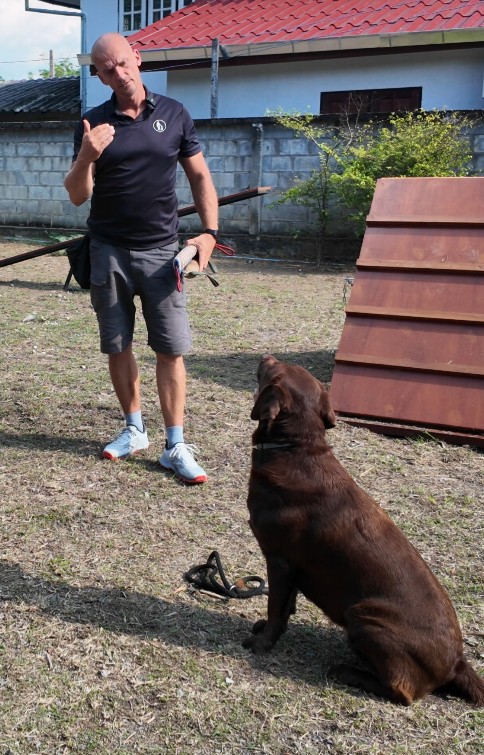

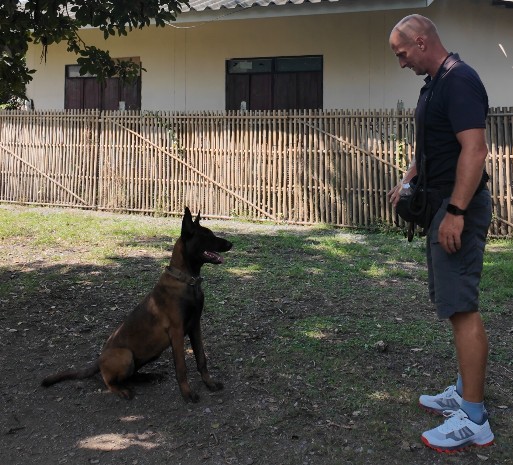
Reflection deepens connection.
As dogs learn to evaluate their own actions and seek help when unsure, a deeper trust is formed. Training becomes dialogue, not command. You’re no longer a handler—you’re their guide through the landscape of their own mind.
Environmental and Training Influences on Reflective Behavior
Your dog’s capacity for metacognition isn’t fixed—it’s profoundly influenced by their environment, training experiences, and the quality of their relationship with you. Understanding these influences can help you nurture your dog’s cognitive abilities and create conditions where self-reflection can flourish.
Trust and Predictability: The Foundation of Cognitive Growth
A trusting, predictable environment provides the psychological safety necessary for metacognitive development. When dogs feel secure, they’re more likely to:
- Take cognitive risks by attempting challenging tasks
- Display uncertainty openly rather than defaulting to anxiety responses
- Engage in exploratory behavior that builds metacognitive skills
- Show information-seeking behaviors rather than avoidance
Dogs in chaotic or unpredictable environments often suppress these behaviors, focusing instead on survival and basic needs. This is why shelter dogs sometimes show dramatic cognitive improvements once settled in stable homes—their metacognitive abilities were always present but needed the right environment to emerge.
Dog Type Variations: Purpose-Built Minds
Not all dogs show equal metacognitive abilities, and these differences often align with their roles and breeding purposes:
Service Dogs demonstrate enhanced metacognitive abilities including:
- Superior uncertainty monitoring in complex tasks
- Advanced error recognition and self-correction
- Sophisticated help-seeking strategies
- Better integration of past experiences into current decisions
Working Dogs (herding, hunting, protection) show:
- Task-specific metacognitive skills related to their work
- Enhanced decision-making under pressure
- Strong evaluation of environmental ambiguity
- Adaptive strategy modification based on outcomes
Companion Dogs often display:
- Social metacognition focused on human interaction
- Strong referential communication when uncertain
- Varied individual differences based on training history
- Potential for developing metacognitive skills through enrichment
Structured Learning: Building Metacognitive Muscles
Just as humans can improve their metacognitive abilities through practice, structured training can enhance these skills in dogs:
- Progressive difficulty training: Gradually increasing task complexity helps dogs develop uncertainty monitoring
- Choice-based learning: Offering options encourages decision-making and confidence assessment
- Error-positive training: Allowing safe mistakes with gentle redirection builds error recognition
- Reflection periods: Brief pauses between attempts encourage evaluation of previous actions
The Human-Canine Bond: A Unique Cognitive Partnership
Perhaps most remarkably, the dog-human relationship creates a unique environment for metacognitive development. Dogs have evolved alongside humans for thousands of years, developing specialized cognitive abilities for interspecific communication. This partnership enhances metacognition through:
- Shared attention and joint problem-solving
- Human scaffolding of difficult tasks
- Social referencing for ambiguous situations
- Emotional co-regulation during uncertainty
Your role in your dog’s metacognitive development cannot be overstated. By providing clear communication, patient guidance, and opportunities for cognitive challenge, you become a partner in their mental growth. 🐾
Practical Applications: Enhancing Your Dog’s Cognitive Abilities
Understanding canine metacognition isn’t just academically fascinating—it has profound implications for how we live with, train, and care for our dogs. Let’s explore how you can apply these insights to enhance your furry friend’s quality of life and deepen your bond.
Adaptive Training Methods: Working with Metacognition
Traditional training often focuses on repetition and consistency, but incorporating metacognitive principles can accelerate learning and create more confident dogs:
- Uncertainty acknowledgment: When your dog shows signs of uncertainty, acknowledge it with calm reassurance rather than repetition
- Choice incorporation: Offer multiple correct options to encourage decision-making and confidence building
- Reflection breaks: After challenging tasks, allow processing time before the next attempt
- Error celebration: Reframe mistakes as learning opportunities, maintaining positivity during self-correction
These methods respect your dog’s cognitive processes and build stronger, more flexible learning.
Behavioral Consultation: A New Diagnostic Lens
For dogs with behavioral challenges, understanding metacognition provides new assessment tools:
- Anxiety might stem from chronic uncertainty rather than specific fears
- Aggression could indicate overwhelming cognitive conflict
- “Stubborn” behavior might reflect low confidence rather than defiance
- Repetitive behaviors could be attempts to create predictability
Behavioral consultants can now design interventions that address the metacognitive roots of problems, not just surface behaviors.
Enrichment Through Cognitive Challenge
Mental stimulation takes on new meaning when we understand metacognition. Effective cognitive enrichment should:
- Present problems with multiple solution strategies
- Include tasks that require confidence assessment
- Offer opportunities for dogs to seek additional information
- Allow for strategy revision and learning from mistakes
Puzzle toys, scent work, and interactive games become tools for developing metacognitive skills rather than just preventing boredom.
Welfare Assessment: Beyond Basic Needs
Animal welfare must consider cognitive needs alongside physical ones. Dogs with developed metacognitive abilities need:
- Opportunities for choice and control
- Appropriate cognitive challenges
- Predictable environments with novel elements
- Social support for uncertainty navigation
Shelters and rescues can use metacognitive assessments to better match dogs with appropriate homes and identify individuals who need extra support.
The Daily Life Impact
In your everyday interactions, recognizing your dog’s metacognitive abilities can transform your relationship:
- Respect hesitation as thoughtful consideration, not disobedience
- Provide information when you see uncertainty signals
- Celebrate problem-solving attempts, not just successes
- Create predictable routines with opportunities for choice
These small adjustments acknowledge your dog as a thinking, self-aware being capable of reflection and growth.
Future Directions: The Expanding Horizon of Canine Cognition
As we stand at the frontier of understanding canine metacognition, the path ahead promises even more remarkable discoveries. Research in this field is accelerating, with new technologies and methodologies opening windows into the canine mind that were previously unimaginable.
Emerging Research Technologies
Advanced neuroimaging techniques are becoming more accessible for animal research, allowing scientists to observe brain activity in conscious, behaving dogs:
- Functional MRI adapted for awake dogs reveals real-time brain activity during metacognitive tasks
- Portable EEG devices enable brain monitoring in natural settings
- Eye-tracking technology provides insights into attention and decision-making processes
- Behavioral coding AI can detect subtle metacognitive indicators humans might miss
These tools promise to deepen our understanding of how dogs think about thinking, potentially revealing metacognitive abilities we haven’t yet imagined.
Implications for Canine Welfare and Rights
As evidence mounts for sophisticated cognitive abilities in dogs, ethical considerations become increasingly important:
- Legal protections may need updating to reflect cognitive capacities
- Training and husbandry practices must consider metacognitive needs
- Breeding programs might select for cognitive traits alongside physical ones
- The human-canine relationship may be reconceptualized as a true partnership
Cross-Species Comparisons: Understanding Cognitive Evolution
Studying metacognition across species helps us understand how these abilities evolved:
- Dogs show unique adaptations for interspecific metacognition
- Comparisons with wolves reveal domestication’s cognitive impacts
- Parallel evolution of metacognition in different species suggests its adaptive value
- Understanding variations helps us appreciate each species’ unique cognitive gifts
The Road Ahead
The journey to understanding canine metacognition has only just begun. Each discovery raises new questions:
- How early in development do these abilities emerge?
- Can we enhance metacognitive abilities through targeted interventions?
- What individual differences exist, and what causes them?
- How does metacognition relate to other aspects of canine consciousness?
Your role in this journey is crucial. Every observation you make of your dog’s thoughtful moments contributes to our collective understanding. By recognizing and nurturing these abilities, you participate in a grand scientific endeavor while deepening your bond with your four-legged companion.
Conclusion: Embracing Your Dog’s Thinking Mind
As we’ve explored the fascinating landscape of canine metacognition, you’ve discovered that your dog’s mental life is far richer than simple stimulus-response patterns. Those moments of hesitation, the thoughtful head tilts, the seeking glances when uncertain—they all point to a mind capable of reflection, evaluation, and self-awareness.
This understanding transforms how we see our canine companions. No longer are they simply following instincts or learned behaviors; they’re thinking beings who monitor their own thoughts, evaluate their confidence, and adjust their strategies based on self-reflection. When your dog pauses before making a decision or looks to you for guidance when uncertain, you’re witnessing the beautiful complexity of a metacognitive mind at work.
The practical implications ripple through every aspect of your life together. Training becomes a collaborative process that respects your dog’s cognitive abilities. Behavioral challenges are reframed as opportunities to support metacognitive development. Daily interactions become richer when you recognize the thinking, evaluating mind behind those soulful eyes.
Perhaps most importantly, understanding canine metacognition deepens the already profound bond between humans and dogs. We’re not just caretakers of simple creatures—we’re partners with thinking, self-aware beings who bring their own cognitive gifts to our shared relationship. This partnership, built on mutual understanding and respect for each other’s mental lives, represents one of nature’s most remarkable interspecific relationships.
As research continues to unveil the depths of canine cognition, one thing becomes clear: our dogs are far more than we ever imagined. They’re not just thinking—they’re thinking about thinking, and in doing so, they invite us to reconsider what it means to share our lives with another conscious, self-aware species. In honoring their cognitive complexity, we honor the full magnificence of the human-canine bond that has enriched both species for millennia. 🧡


